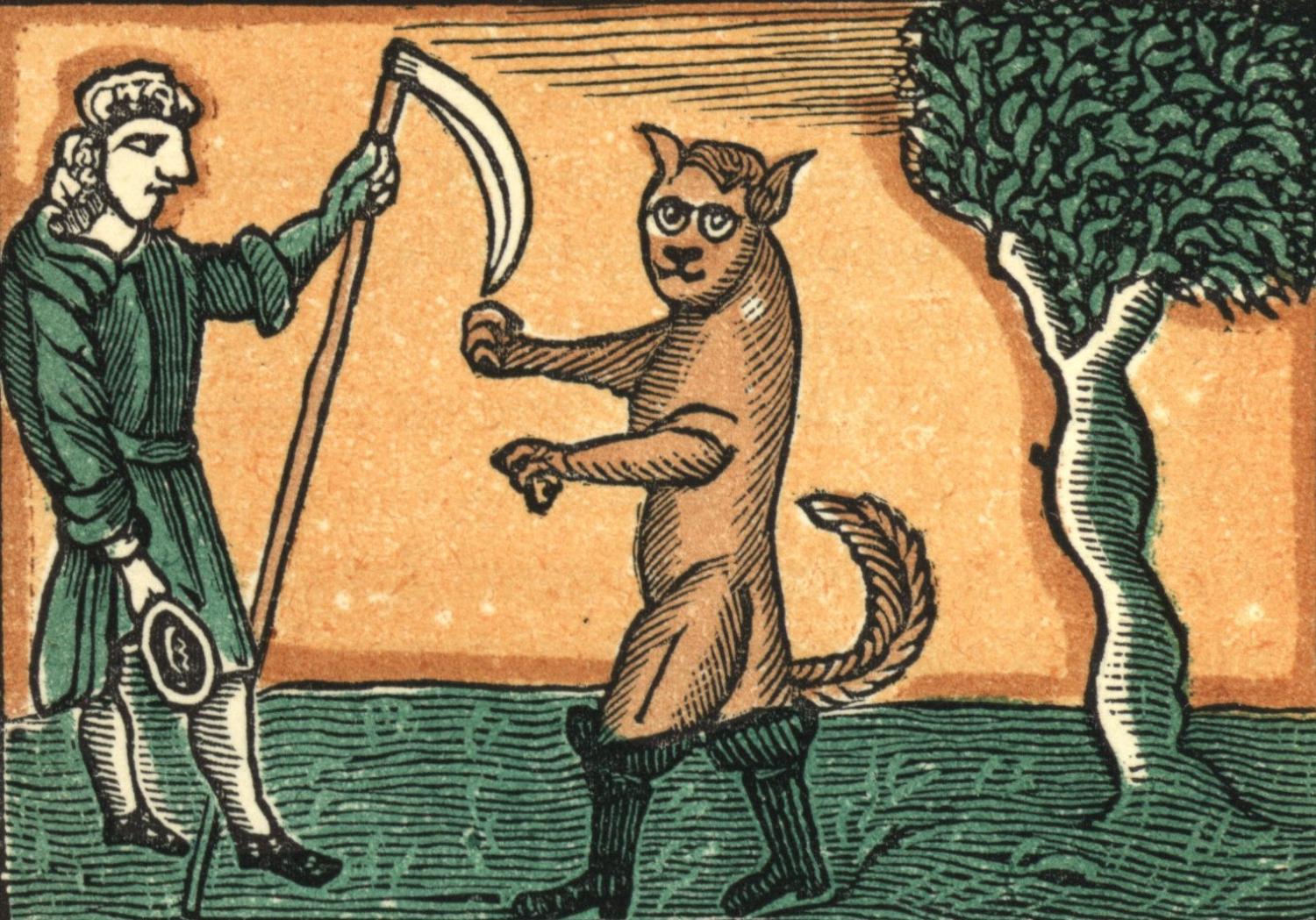“The Master Cat; Or, Puss in Boots.” Histories or Tales of Past Times Written for Children Told By Mother Goose with Morals, Charles Perrault, edited by J. Saxon Childers, London: The Nonesuch Press., 1925, pp. 62-71.

Tale Summary
Once, there was a poor miller, who only had his Mill, his Ass, and his Cat, to leave to his sons. The youngest, inheriting the Cat, was despondent, and the Cat overhears him lamenting his lot (the boy fears he will have to eat his cat and make a muff of his skin). Hearing this, the Cat asks for a bag and a pair of boots. The Cat hunts a young rabbit, which he brings to the King, saying it is a gift from his Lord the Marquis of Carabas. The King is pleased by this, and for several months the Cat goes about bringing him game this way. One day, the Cat knew that the King would be with his daughter (the most beautiful princess in the world) by the riverside, and says to his master to bathe in the river and to leave the rest to him. When the King passes by, the Cat cries out that his Lord Marquis of Carabas is going to be drowned, and recognizing the Cat as the one who brings him such good game, orders his guards to help. The Cat tells them that some rogues came by and took his clothes, so the King gifts him a fine suit. Upon seeing him, the princess takes a liking to him. The Cat goes ahead and tells some countrymen and some reapers that they must tell the King that the meadows and the corn belong to the Lord Marquis of Carabas under threat of being chopped as small as herbs for the pot. They do this, and the King is impressed with the supposed estate of the miller’s son. Next, the Cat comes to a castle belonging to a very wealthy ogre and asks to have a presence with him. The Cat tells him that he has heard of the ogre and that he is able to transform himself into any large animal. To further convince him, the ogre turns into a lion. When he transforms back, the Cat tells him he has also heard that he can turn into a very small animal, but he thinks it must be impossible. To prove him wrong, the ogre turns into a mouse, and the Cat eats him up. The King arrives at the castle, and curious goes inside. The Cat welcomes him, to the castle of his Lord Marquis of Carabas. The King is impressed, gives the miller’s son his daughter’s hand in marriage, and the Cat becomes a great Lord.
Fairy Tale Title
The Master Cat; Or, Puss in Boots
Fairy Tale Author(s)/Editor(s)
Charles Perrault, J. Saxon Childers
Fairy Tale Illustrator(s)
None listed
Common Tale Type
Puss in Boots
Tale Classification
ATU 545B
Page Range of Tale
pp. 62-71
Full Citation of Tale
“The Master Cat; Or, Puss in Boots.” Histories or Tales of Past Times Written for Children Told By Mother Goose with Morals, Charles Perrault, edited by J. Saxon Childers, London: The Nonesuch Press., 1925, pp. 62-71.
Original Source of the Tale
Charles Perrault
Tale Notes
This tale refers to Puss as The Cat for most of the story, then abruptly changes to only referring to him as Puss.
This tale is given two morals:
“How advantageous soe’er it be,
By long Descent of Pedigree,
T’enjoy a great Estate;
Yet Knowledge how to act we see,
Join’d with consummate Industry,
(Nor wonder ye thereat)
Is, for the gen’ral, of itself alone
To be more useful to young People known.”
“If the Song of a Miller so soon gain the Heart
Of a beautiful Princess, and makes her impart
Sweet languishing Glances, Eyes dying for Love,
It must be remark’d of fine Clothhes, how they move,
And that Youth, a good Face, a good Air, with good
Mien,
Are not always indiff’rent Mediums to win
The Love of the Fair, and gentle inspire
The Flames of sweet Passion and tender Desire.”
Research and Curation
Kaeli Waggener, 2022
Book Title
Histories or Tales of Past Times Written for Children Told By Mother Goose with Morals
Book Author/Editor(s)
Charles Perrault, J. Saxon Childers
Illustrator(s)
None listed
Publisher
The Nonesuch Press
Date Published
1925
Decade Published
1920-1929
Publisher City
London
Publisher Country
United Kingdom
Language
English
Rights
Public Domain
Digital Copy
Available at the CU Digital Library
Book Notes
This book includes morals at the end of each tale.

